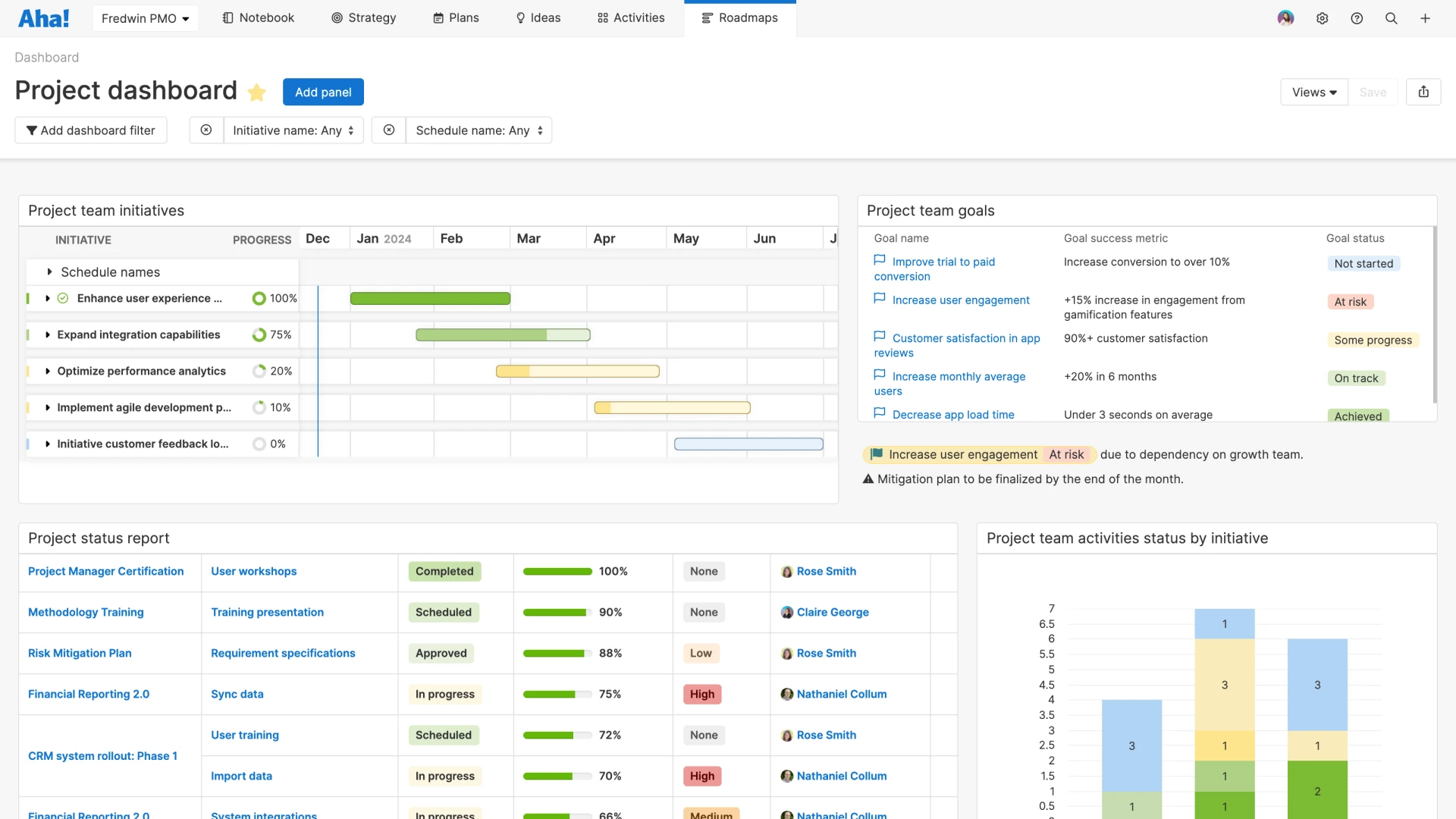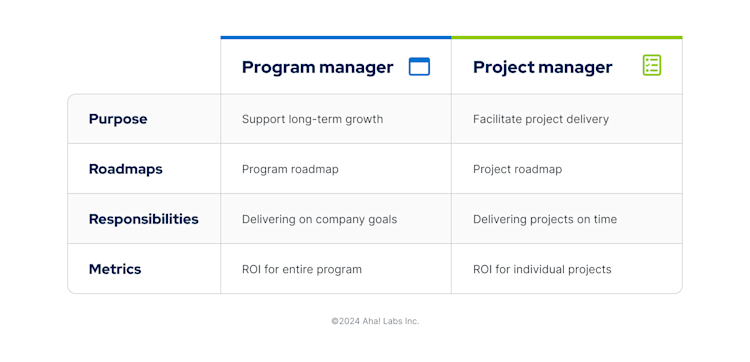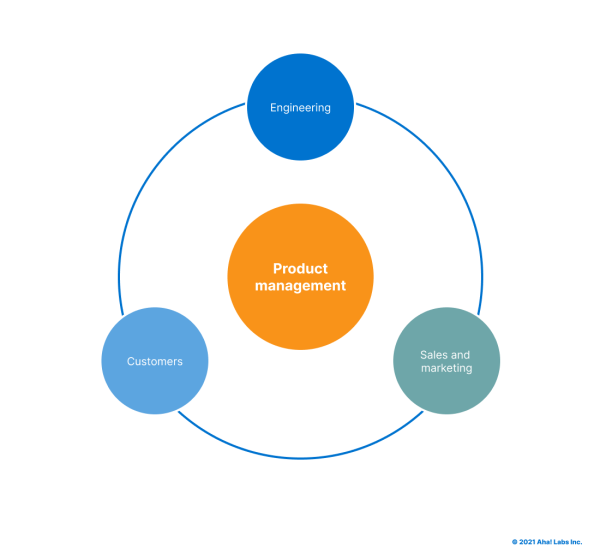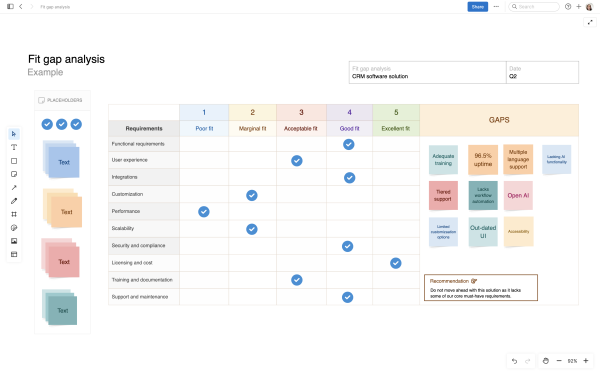A guide to the basics of program management
Last updated: April 2024
Have you ever worked with a program manager? If you are in product or project management at an enterprise software company, chances are that you have — either directly or indirectly. It is a fairly common role at large organizations with extensive product offerings and numerous teams. And yet, many folks find the details of program management to be hazy (which is true whether you are in close proximity to it or not.)
This is partly due to the broad scope of the role, but also because of its shared similarities with portfolio management and close collaboration with both product management and project management. When you have all of these functions working within an organization, it can be easy to mix things up.
So let's straighten them out. If you are curious about what program management really is, this guide will help you understand the basics — including some specific examples. Use the following links to jump ahead to a specific section:
What is a program (in program management)?
Let's start with the building blocks of program management: programs. A program refers to a collection of related projects that are managed together in order to achieve long-term business objectives. Grouping buckets of work under one program helps make large-scale efforts more cohesive. In turn, this helps program managers track progress and ROI broadly across an initiative (vs. individual projects).
Programs often represent a major strategic investment or change for a company. An example of a program could be embarking on digital transformation, rolling out a tech stack across the enterprise, or developing a new partnership program. Because efforts like these require multiple discrete efforts to complete, program timelines are typically longer and more fluid than a project schedule — sometimes requiring multiple years to complete. But in general, programs move through a similar lifecycle as projects with distinct phases.
Here is a brief overview of the program management lifecycle:
Program management lifecycle stage | Definition |
Program definition | Program objectives, scope, stakeholders, and resources are defined in collaboration with company leadership. Project teams are prepped to begin work on individual efforts to support the program. |
Program delivery | Planned projects and activities are implemented to deliver on the program. This involves managing resources, monitoring progress, and addressing any roadblocks that arise across projects within the program. Changes in scope and decisions are documented along the way. |
Program closure | After completion, program outcomes and ROI are evaluated against the initial goals. Any issues are considered as process improvements for future programs. |

Program management involves coordinating multiple projects as part of a major initiative. The project dashboard in Aha! Roadmaps can help you track progress, resources, and delivery across many project efforts at once.
What is program management?
Program management is the process of overseeing a program, or a set of related projects, to completion. It has a broad scope by design — program management handles the "big picture" of major initiatives by coordinating cross-functional efforts to achieve the business strategy. This frees up functions such as project and product management to keep a tighter focus on their core responsibilities.
Where project management success is evaluated by on-time and on-budget delivery, program management is focused on ROI. This can be challenging, as program impact can vary widely — from revenue growth to operational efficiency. In many cases, program management is tasked with defining what success will look like at the program's onset.

In this way, program management acts as a layer between company leadership and individual project and product teams — not in authority, but in coordination. It can be an essential function for large organizations that need a team to optimize resources, assess risks, and keep communication open across several departments. Most importantly, program management can drive alignment on business goals across all of the teams contributing to them.
Most organizations that require program management hire dedicated program managers for this work. It is typically a role held by more senior or experienced team members, as it relies on a deep understanding of business strategy as well as how other teams work.
Related:
An example of program management
With all of this talk about programs, projects, and products, you might be curious to see a concrete example. Let's walk through a sample program with specific details on what program management is really like — using our favorite fictitious company, Fredwin Cycling, and its cycling app product.
Scenario: Company leadership decides to introduce a partnership program for the Fredwin Cycling app. The goal is to drive revenue and engagement via a rewards system. People can use it to redeem points for perks or discounts with partnering businesses. The leadership team also hopes to build market awareness by partnering with other businesses in the wellness industry.
In this scenario, the program structure might resemble the following (remember: A program encompasses multiple projects):
Type of work | Title and activities (example) |
Program | Program title: Implement partnership program Program management activities
|
-> Project A | Project title: Partner onboarding Project management activities
|
-> Project B | Project title: Partnership agreements Project management activities
|
-> Project C | Project title: Partnership monitoring Project management activities
|
In this example, and often in program management, cross-functional collaboration is essential and ongoing. Program and project management will work together most frequently — but other teams such as product management, marketing, and customer success will play important roles in implementing this program as well.
Let's take a closer look at examples of how these teams could contribute to the Fredwin Cycling partnership program:
Product management
Research various solutions for integrating a rewards system into the Fredwin Cycling app.
Develop and launch features to support the partner program within the app.
Iterate on these features based on product usage and customer feedback.
Marketing
Develop marketing materials to promote the rewards program to both users and potential partners.
Create targeted campaigns to drive user engagement with the rewards system.
Measure the effectiveness of marketing efforts and optimize strategies for maximum impact.
Customer success
Assist users experiencing issues or questions related to the rewards system.
Share feedback with product and engineering teams related to technical issues or usability concerns.
Educate customers on how to get the most benefits from the rewards system.
The list does not end there. Functions such as engineering, legal, and finance all help to ensure the program's success, too. It is program management's responsibility to be the central point of contact for the program — coordinating all of these cross-team activities on a high level, tracking progress across the organization, and delivering updates to leadership.
Related:
What to look for in program management software
Program management can "exist" in many types of tools. But ideally, you want something designed for use throughout the whole enterprise — so you can visualize progress across different teams within the same environment. This makes it easier to stay aligned when you are operating on the program level.
Aha! software supports program management work alongside product development. It allows you to capture business strategy and see how goals are progressing across project and product teams. Specifically, you can:
Set program strategy with OKRs.
Track high-level goals and initiatives.
Link up project and product work to company goals.
Monitor risks, dependencies, and milestones on a Gantt chart or program roadmap.
Quickly build presentations for leadership.
Create internal documentation with program management templates.
You can try Aha! Roadmaps free for 30 days to see for yourself. Or you might want to try some of our templates, such as the decision log template below.
Try the decision log template for program management — with a free trial.

FAQs about program management
How do I measure the success of a program management approach?
Program management success is what you make it (in a way). Program managers are responsible for defining what the desired ROI will be for each program. This ROI is often tracked through key performance indicators such as program delivery within budget and timeline, stakeholder satisfaction, and achievement of program objectives.
How does program management contribute to achieving strategic business objectives?
Contributing to long-term business objectives is a key part of program management. Program managers do this by working with individual project and product teams (and others) to ensure each group's strategy aligns with overarching business goals. Tracking progress and ROI on a high level helps the entire organization stay focused on the big picture.
How can I maintain stakeholder engagement throughout the program lifecycle?
Program management can involve stakeholders by regularly collecting feedback, providing progress updates, and hosting meetings to go over program results. Bringing stakeholders into conversations regularly throughout the program lifecycle keeps them informed and aligned with the work you are doing.


